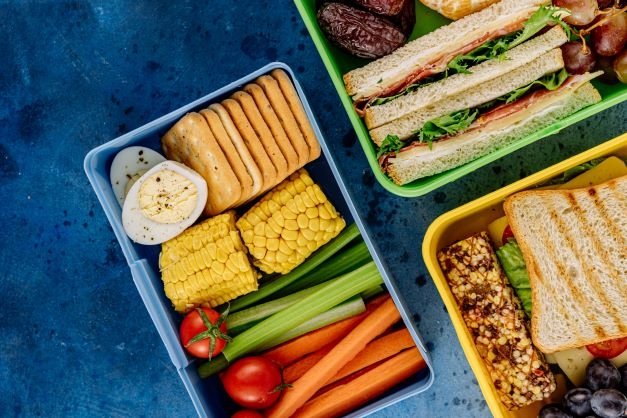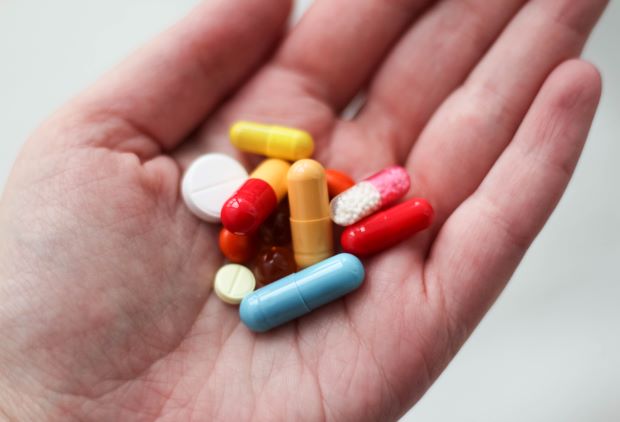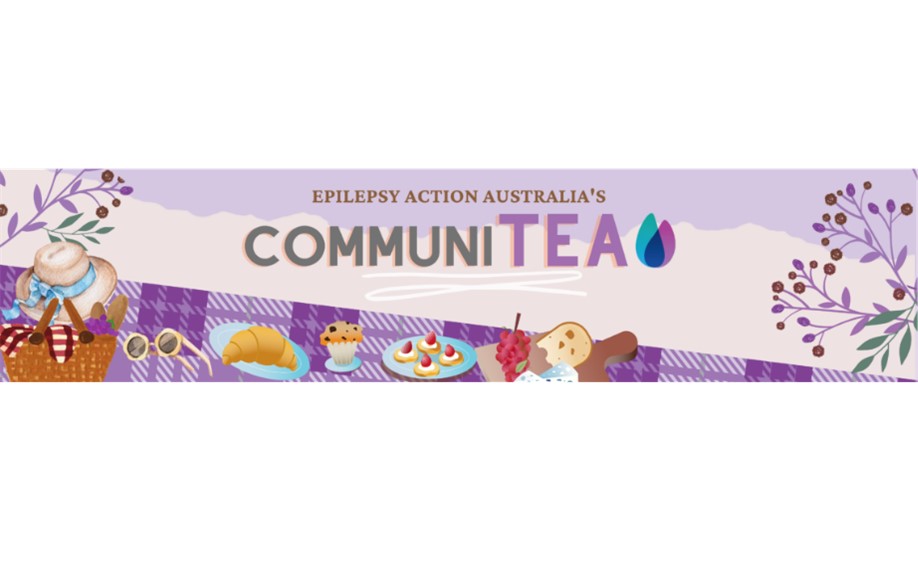
by Belinda | Oct 27, 2022 | Health Assessments, Uncategorised, Workplace Education
Australian Food Safety Week will run from 12-19th November. This year’s theme is Food safety – raw and risky. As the theme suggests, the focus will be on covering the risk of food poisoning from raw or minimally cooked meat, poultry, fish, eggs & vegetables as well as the risk of possible parasite infections. This year marks the 25th Anniversary of the Food Safety Information Council have been educating the Australian community about food safety.
Food safety at the workplace
Bringing your lunch to work is not only a healthy option but also cost effective. But not all workplaces have the facilities, (for whatever reason) to be able to safely store your food in a fridge. With research showing that there are an estimated 4.1 million cases of food poisoning in Australia each year, it is time we focus on safely packaging and storing our food. Bacteria can grow quickly in some foods, such as cooked poultry and other meats, dairy products and sandwich fillings so it’s important to keep your lunch boxes cool. A simple way of doing this is to include a freezer block in with your lunch or freeze a juice box and add that to keep your food cool until lunchtime.
5 simple lunchbox food safety tips:
- When buying lunchboxes choose ones that have room for a frozen drink or freezer block & are easy to clean & dry
- Always wash & dry your hands thoroughly before preparing food
- Wash all fruits and vegetables thoroughly
- Make sure lunchbox foods are always well separated from other foods in the refrigerator, particularly raw meats, chicken & fish
- Keep the lunch cool in the fridge until you are about to leave home
(Source: Food Safety Information Council)
Here are some good tips from the Food Safety Information Council on thing to do and look for.
Choose
- Low risk foods
- Lunchboxes that are easy to clean & dry. (Insulated lunchboxes are a great idea)
Clean
- When preparing food, always practice scrupulous handwashing
- Lunchboxes & reusable drink bottles must be thoroughly washed and dried daily. Replace if cracked, split or crazed, as bugs love hidey holes
- Ensure cutting boards, benches & utensils are clean & dry
- Wash all fruits & vegetables thoroughly
- With a staff kitchen, set up a roster to ensure bench tops are clean & dish cloths, sponges, brushes & tea towels are clean & replaced regularly
- Wash dirty dishes in hot soapy water or put in the dishwasher
Cook
- Make sure lunch foods are cooked properly in the first place
- When reheating, make sure they are steaming hot all the way through
Chill
- Lunches can safely be prepared a little ahead of time provided they are kept in the fridge or frozen
- When leaving home, pack a frozen juice box, water bottle or commercial ice pack with the lunch. Place perishable foods such as cheeses and sandwiches between the frozen items
- Keep lunchboxes away from heat sources including direct sunlight
- Divide cooked leftovers into small lunch-sized portions so they refrigerate or freeze quickly
- Put food in the fridge as soon as you get to work or if there is no fridge available, pack food in insulated containers with frozen drinks or freezer bricks
- Staff fridges should be uncrowded and running at or below 5°C
Separate
- Make sure lunchbox foods have been well separated from other foods in the refrigerator, particularly meats, chicken & fish
General Advice
- If in doubt throw it out!
- Warn children against sharing drinks and food due to allergies
- If you or your child has food poisoning don’t go to work or school & avoid handling food for others for 48 hours after symptoms stop. If food poisoning symptoms persist, visit a doctor.
(Source: Food Safety Information Council)

by Belinda | Oct 27, 2022 | Health Assessments, Skin Checks, Uncategorised, Workplace Education
As we approach the start of summer, we all need to be vigilant both at work and in our own time to protect ourselves from the sun. Whilst some jobs require us to spend more time out in the sun, it is extremely important to protect ourselves and book in for the yearly skin check.
Workplace Health and Safety Victoria can help you monitor your employee’s skin health by offering efficient, thorough on-site skin checks and education provided by trusted professionals.
Whether your employees work indoors or outdoors, workplace skin checks are a vital part of any health and wellness program.
According to SunSmart (2022), the sun’s UV radiation is a serious health and safety hazard – especially for people who work outdoors. Australia has some of the highest levels of UV radiation in the world and daily UV exposure adds to increased risk of cancer.
According to the Cancer Council, Australia still has one of the highest rates of skin cancer in the world, including melanoma and non-melanoma skin cancers. Currently two in three Australians will be diagnosed with skin cancer by the age of 70 every year, and around 2000 Australians die from this disease.
What is skin cancer?
Skin cancer occurs when skin cells are damaged, from overexposure to ultraviolet (UV) radiation form the sun.
There are 3 main types of skin cancer:
- Basal Cell Carcinoma
- Squamous Cell Carcinoma
- Melanoma (the most dangerous form of skin cancer)
Skin Cancer Facts:
Every year in Australia:
- Skin cancers account for around 80% of all newly diagnosed cancers
- The majority of skin cancers are caused by exposure to the sun
- The incidences of skin cancer is one of the highest in the world, two to three times the rates in Canada, the US and the UK
(Source: Cancer Council)
What to look out for on your skin:
According to the Cancer Council (2019), often melanomas have no symptoms, however, the first sign is generally a change in an existing mole or the appearance of a new spot. These changes can include:
- A spot that has changed size, shape, color or texture
- A spot that looks and feels different from other spots on your skin
- A sore that is itching or bleeds
- A sore that fails to completely heal
Prevention:
How can your employees minimise their chances of obtaining a melanoma?
- Wear SPF30+ sunscreen
- Wear a hat that covers the head, neck and ears
- Avoid sunburn by minimising sun exposure when the UV Index exceeds 3 and especially in the middle of the day where UV levels are more intense
- Seek shade where possible
- Wear sun protective clothing and close-fitting sunglasses
Diagnosis for a melanoma:
If your employee notes a suspicious spot or mole on their skin, our doctors may examine using a magnifying instrument, using the ABCDE method:
- A – Asymmetry – irregular
- B – Border – uneven
- C – Colour
- D – Diameter – look for spots that are getting bigger
- E – Evolving – changing and growing
If our doctor suspects a melanoma, your employee will be referred to their GP or otherwise they can visit our clinic for further testing.
Workplace Skin Checks:
Skin checks are vital for early detection of skin cancer and are an essential inclusion in any workplace wellness program. To enhance your employee health and wellness benefits, our trained skin doctors can provide a workplace skin check to your employees in 15 minutes – this involves the use of special lighting and tools to assess the whole body for spots or any areas of concern.
Please email workplacehealth@gmhg.com.au or call 0456 387 569 to discuss options for your workplace.

by Belinda | Oct 27, 2022 | Health Assessments, Uncategorised, Workplace Education
November 18th – 24th is Antimicrobial Awareness Week. The overarching message for Antimicrobial Awareness Week in 2022 is Antimicrobials: handle with care and the theme for 2022 is Preventing Antimicrobial Resistance Together for the food, animal, agriculture and human health sectors. (Source: Safety and Quality.gov.au)
According to the World Health Organisation (2020), World Antimicrobial Awareness Week (WAAW) aims to increase the awareness of global antimicrobial resistance and to encourage best practices among the general public, health workers and policy makers to avoid further emergence and spread of drug-resistant infections.
Antimicrobial Awareness Week is an opportunity to focus on, and promote, the safe and appropriate use of antimicrobials in your health service or hospital and note the challenges of antimicrobial resistance to safe, quality health care provision.
What are antibiotics?
Antibiotics are medicines used to prevent and treat bacterial infections. Antibiotic resistance occurs when bacteria change in response to the use of these medicines.
WHO has outlined five goals about global antibiotic resistance including:
- Raising awareness
- Increasing monitoring and research
- Reducing infections
- Making the best use of antimicrobial medications
- Committing to “sustainable investment.”
Facts about antibiotic resistance
- Antibiotic resistance is a global issue
- Antibiotic resistance can affect anyone, of any age, in any country
- Antibiotic resistance occurs naturally, but misuse of antibiotics in humans and animals is accelerating the process.
- Resistance can be caused by using antibiotics inappropriately
- A growing number of infections – such as pneumonia, tuberculosis, gonorrhoea, and salmonellosis – are becoming harder to treat as the antibiotics used to treat them become less effective
- Poor-quality Medicines can contribute to resistance
- Better infection prevention and control can help reduce antibiotic resistance
Whilst antibiotics have their place and are effective when correctly used, we all have a part to play in helping to preserve the power of antibiotics with our knowledge.

by Belinda | Oct 27, 2022 | Health Assessments, Uncategorised, Workplace Education
National Epilepsy Awareness Month in November is an annual event that teaches people about epilepsy’s causes and symptoms. One in 26 people will be diagnosed with epilepsy at some point during their lifetime.
‘In Australia, around 250,000 people are currently diagnosed with epilepsy – that’s over 1 per cent of the population.’ –www.epilepsy.org.au (2022).
The Epilepsy Awareness Month encourages you to gather together with your work colleagues, friends and family and enjoy and host a CommuniTEA.
If your workplace is interested in learning more about epilepsy and how to manage someone having a seizure in your workplace, Epilepsy Action Australia offer education for organisations, (available online). https://learn.epilepsy.org.au/w/services/
What is epilepsy?
According to Epilepsy Action Australia (2021), epilepsy is diagnosed when someone has a tendency to have recurrent seizures.
Epilepsy in the workplace
Many people with epilepsy can be gainfully employed, while others find it difficult to get a job.
Epilepsy is often well controlled, however if it is not controlled, then finding a job may be difficult particularly if there are safety issues concerned.
Disclosing to your Employer
Legally in Australia, you are under no obligation to disclose your condition unless it affects your ability to meet the inherent requirements of your job. The worry about discrimination at work is a genuine concern when disclosing epilepsy to an employer.
If you decide to, you should discuss with your employer any requirements you need for the job, the workplace environment (for safety issues), whether you work alone or in a group and whether you would need any specific accommodations made for your epilepsy.
For an employer to be able to fulfill their obligations under the WH&S Act, they need to be aware of any condition that may require them to change working practices or environment to improve safety. Disclosing can also allow the employer to make reasonable adjustments if you need any.
Maintaining Employment
According to Epilepsy Action Australia (2021), if seizures are likely to hinder your performance at work, an employer is expected where possible to make reasonable adjustments to the workplace. This can include things like changing work hours or changing your role within the organisation until your seizures are controlled.
What is the best way to help someone having a convulsive seizure?
According to Epilepsy Action Australia (2020):
- Stay with the person
- Time the seizure
- Keep them safe. Protect from injury, especially the head.
- Roll person into recovery position after the seizure stops (or immediately if food/fluid/vomit is in mouth)
- Observe and monitor breathing
- Gently reassure until recovered
- Call an ambulance if there is an injury; if the seizure lasts for longer than 5 minutes or if after the seizure ends the person is having breathing difficulties or is non-responsive.

by Belinda | Oct 27, 2022 | Health Assessments, Uncategorised
November is Lung Cancer Awareness Month. This year you can help fund life-changing research and support programs to provide hope for Australians living with lung cancer. To find out how you can get involved, please visit: https://shinealight.lungfoundation.com.au/
“In Australia, more than 13,810 people will be diagnosed with lung cancer this year and almost 85% will be diagnosed at a late stage. It is our country’s most devastating cancer. While this is confronting, together we are making an undeniable impact on the future of lung cancer.
Thanks to research, treatment advancements in the last 20 years has seen lung cancer survival rates increase more than any other cancer. Now more than ever, we need to work together and build on the momentum we’ve created to drive real and lasting change. There is still more work ahead, and we can’t win this race without your ongoing support.”
(Source: Fundraise.lungfoundation.com.au/shinealightonlungcancer)
It’s important to know the symptoms of lung cancer as although lung cancer occurs mostly in people aged 60 and over, it can affect people of any age.
The Symptoms
- Coughing up blood
- New or changed cough that doesn’t go away
- Chest pain and/or shoulder pain or discomfort – the pain may be worse with coughing or deep breathing
- Trouble breathing or shortness of breath
- Hoarse voice
- Weight loss
- Loss of appetite
- Chest infection that doesn’t go away
- Tiredness or weakness
Many conditions can cause these symptoms, not just lung cancer. Anyone can get lung cancer, even if they have never smoked. If you have any of these symptoms and they are persistent, talk to your doctor.
Despite being Australia’s biggest cancer killer, fundraising for life-changing research is devastatingly low. But where there is light there is hope. For more than a decade, Lung Foundation Australia’s Shine a Light on Lung Cancer campaign has raised money to support groundbreaking lung cancer research. To donate go to https://fundraise.lungfoundation.com.au/sponsor

by Belinda | Oct 27, 2022 | Health Assessments, Uncategorised
Changing the face of men’s health.
Movember – The origin.
“In 2003, two mates from Melbourne were having a quiet beer when their conversation turned to recurring fashion trends. The moustache, a fixture in past decades, was nowhere to be seen in recent trends. They joked about bringing it back. The two friends decided to talk their mates into growing a Mo. Inspired by a friend’s mother who was fundraising for breast cancer, they decided to make the campaign about men’s health and prostate cancer. They designed the rules of Movember (which are still in place today) and agreed to charge ten dollars to grow a Mo. Trav designed the first Movember logo, and they sent around an email titled ‘Are you man enough to be my man?’ They found 30 guys willing to take up the challenge.”
“With the support of millions of Mo Bros and Mo Sistas from all over the world, Movember is working towards its vision: to have an everlasting impact on the face of men’s health.” (Source:au.movember.com)
Join the challenge this month to raise awareness and funds for men’s health!
“Globally, men die on average 5 years earlier than women, and for reasons that are largely preventable. Which means that it doesn’t have to be that way: we can all take action to live healthier, happier and longer lives.” (Source: Movember.com.)
Movember is raising funds to support, research, fund and transforming the way health services reach and support men in the following areas.
• Prostate cancer
• Testicular cancer
• Mental Health and Suicide Prevention
Movember (2022) top 5 things to know and do:
1. Spend time with people who make you feel good.
2. Talk more – being there for someone and listening can be lifesaving.
3. Know the numbers – at 50, talk to your doctor about screening for prostate cancer. If you have a family history, this conversation should start at 45.
4. ‘Know thy nuts – it’s simple’ – regularly check and see your doctor if something doesn’t feel right.
5. Move more – walk to meetings, ride to work, run in the mornings. It’s good for the body and mind.
How can you participate in Movember this month?
• Grow a Mo – to start the conversation.
• Move for Movember – Run or walk 60km over the month. That’s 60km for 60 men we lose to suicide each hour (globally) – sign up at https://au.movember.com/get-involved/move
• Host a ‘Mo-ment’ – rally a crew and do something fun to raise funds. https://au.movember.com/get-involved/host
• Mo Your Own Way – whether it’s a grueling test of physical endurance or some other wildcard idea. https://au.movember.com/get-involved/mo-your-own-way
• Donate – https://au.movember.com/donate
• Support the men at your workplace and book in health assessments with WHS Vic.
GIVE SUPPORT – GET SUPPORT





